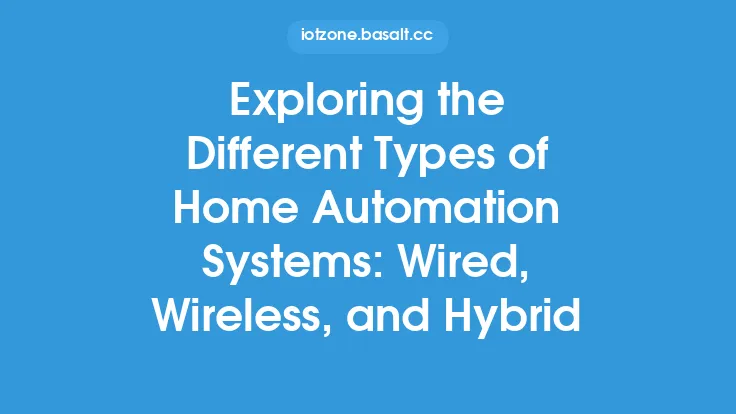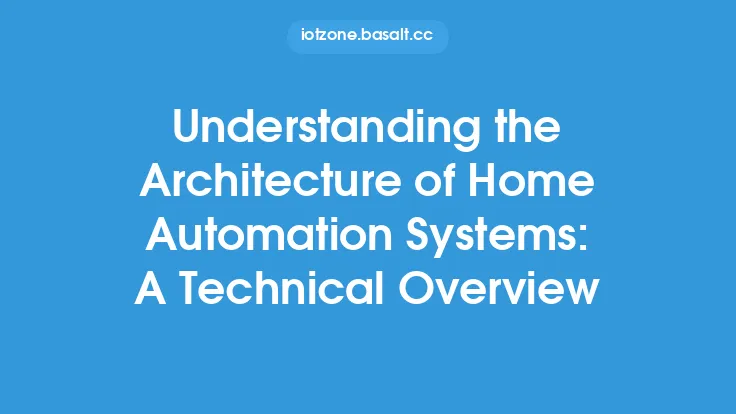The concept of home automation has revolutionized the way we live, work, and interact with our living spaces. At the heart of this revolution are home automation systems, which have made it possible to create a comfortable and secure living space with ease. These systems integrate various technologies to provide a seamless and intuitive experience, allowing homeowners to control and monitor their homes with minimal effort. In this article, we will delve into the role of home automation systems in creating a comfortable and secure living space, exploring the various components, technologies, and benefits that make them an essential part of modern living.
Introduction to Home Automation Systems
Home automation systems are designed to integrate various devices and appliances within a home, allowing for centralized control and monitoring. These systems typically consist of a hub or controller, sensors, actuators, and communication protocols that enable devices to interact with each other. The hub or controller serves as the brain of the system, receiving and processing data from sensors and sending commands to actuators to perform specific tasks. Sensors, such as temperature, humidity, and motion sensors, provide data on the home's environment, while actuators, such as lights, thermostats, and security cameras, carry out the desired actions.
Creating a Comfortable Living Space
Home automation systems play a significant role in creating a comfortable living space by providing a high degree of control over the home's environment. For instance, temperature control systems can be programmed to maintain a consistent temperature throughout the day, while lighting systems can be adjusted to create a cozy atmosphere. Additionally, home automation systems can integrate with entertainment systems, allowing homeowners to control their music, video, and gaming experiences with ease. Advanced systems can even learn a homeowner's preferences and adjust the environment accordingly, providing a personalized experience.
Ensuring a Secure Living Space
Home automation systems also contribute to a secure living space by integrating with security devices such as cameras, door locks, and alarm systems. These systems can be programmed to send notifications to homeowners in case of suspicious activity, allowing them to take prompt action. Advanced security systems can even use machine learning algorithms to detect and respond to potential threats, providing an additional layer of protection. Furthermore, home automation systems can be integrated with emergency services, enabling rapid response in case of an emergency.
Key Components of Home Automation Systems
Several key components are essential to the functioning of home automation systems. These include communication protocols such as Zigbee, Z-Wave, and Bluetooth, which enable devices to interact with each other. Powerline communication protocols, such as X10 and Insteon, use the home's electrical wiring to transmit data between devices. Wireless communication protocols, such as Wi-Fi and cellular networks, provide greater flexibility and convenience. Other essential components include user interfaces, such as touchscreens, voice assistants, and mobile apps, which allow homeowners to interact with their home automation systems.
Benefits of Home Automation Systems
The benefits of home automation systems are numerous and well-documented. They provide a high degree of convenience, allowing homeowners to control their homes with minimal effort. They also offer enhanced security, providing peace of mind and protecting against potential threats. Additionally, home automation systems can help reduce energy consumption, providing cost savings and contributing to a more sustainable future. They can also increase the value of a property, making them an attractive feature for potential buyers.
Technical Considerations
From a technical perspective, home automation systems require careful consideration of several factors. These include scalability, which refers to the ability of the system to accommodate additional devices and features. Interoperability is also essential, ensuring that devices from different manufacturers can communicate with each other seamlessly. Security is a critical concern, with home automation systems requiring robust encryption and authentication protocols to protect against hacking and unauthorized access. Finally, reliability is essential, with home automation systems requiring redundant systems and backup power sources to ensure continuous operation.
Real-World Applications
Home automation systems have numerous real-world applications, ranging from simple tasks such as turning on lights to complex tasks such as monitoring and controlling entire buildings. They are used in residential, commercial, and industrial settings, providing a high degree of control and flexibility. Home automation systems are also used in smart cities, where they play a critical role in managing energy consumption, traffic flow, and public services. Additionally, they are used in healthcare, where they can be used to monitor patients and provide personalized care.
Conclusion
In conclusion, home automation systems play a vital role in creating a comfortable and secure living space. By integrating various devices and appliances, these systems provide a seamless and intuitive experience, allowing homeowners to control and monitor their homes with minimal effort. With their numerous benefits, including convenience, security, and energy efficiency, home automation systems are an essential part of modern living. As technology continues to evolve, we can expect to see even more innovative applications of home automation systems, further enhancing our living spaces and improving our quality of life.





